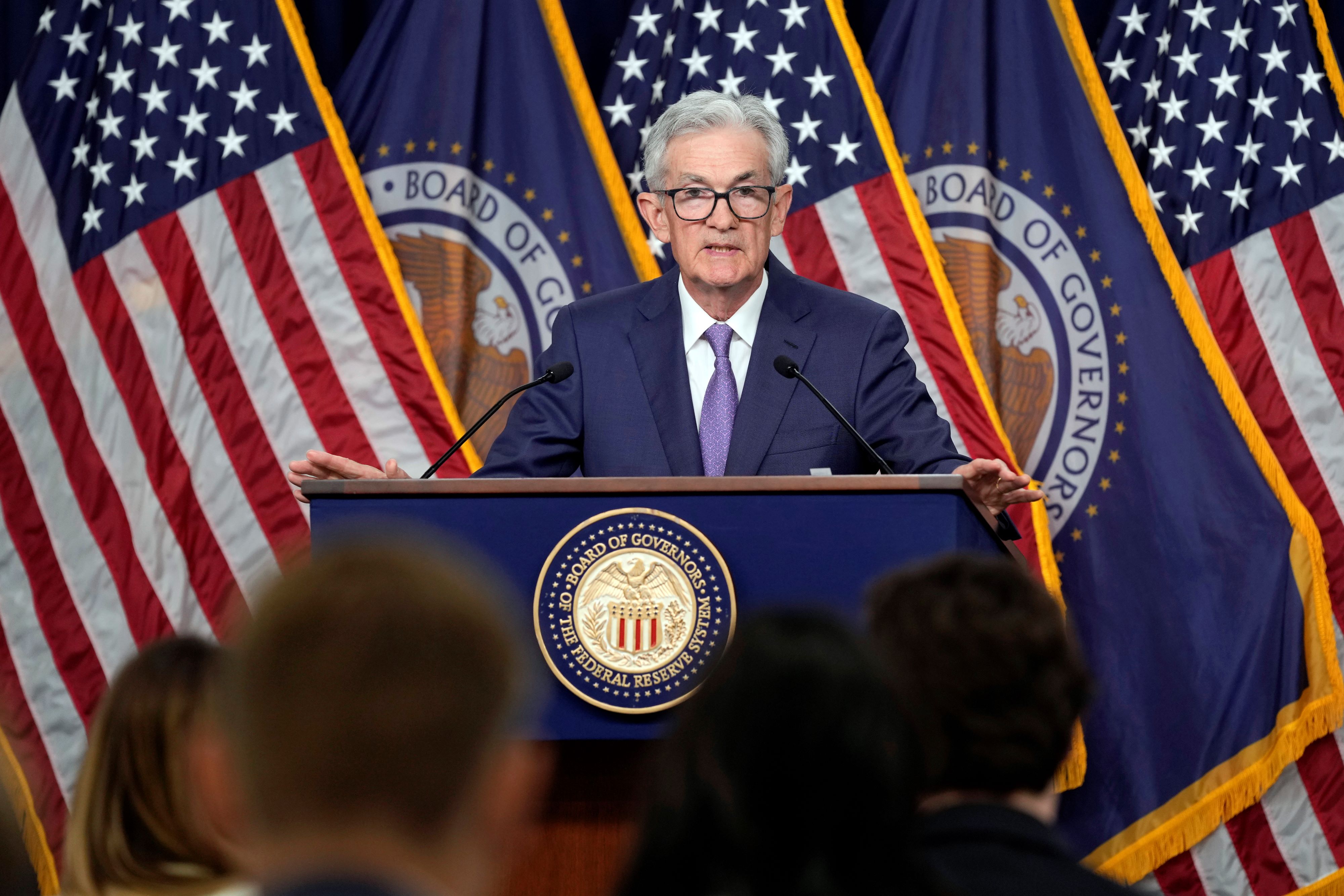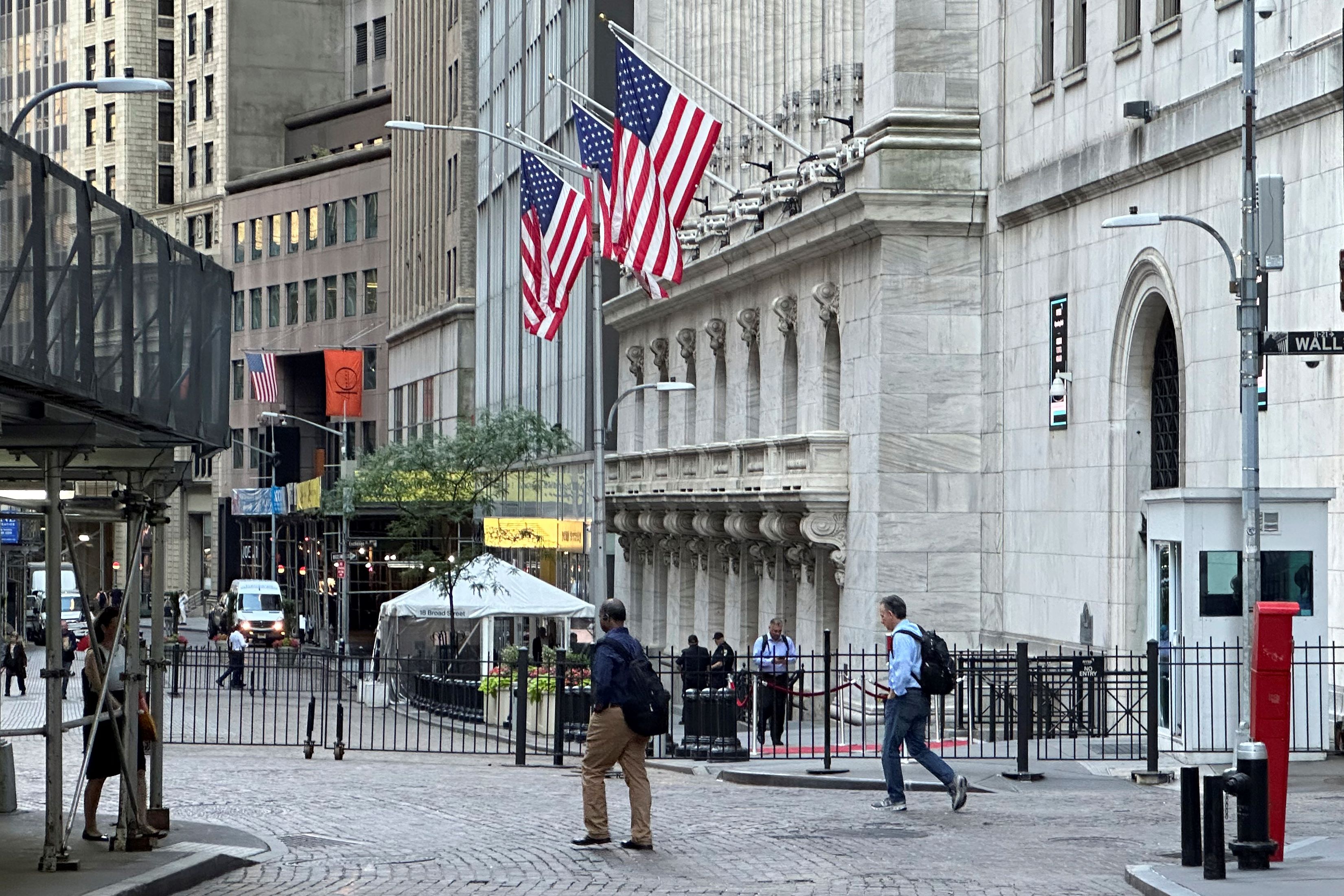
WASHINGTON - Six months ago the world's major central banks were primed for a move that anyone with a credit card or hoping to buy a home or run a business would cheer: A global shift to lower interest rates that would make borrowing cheaper and loans more available across the board.
Rate cuts are "a topic of discussion out in the world and also a discussion for us," Federal Reserve Chair Jerome Powell said in a press conference last December, when the mood among investors was giddy over the prospect of looser financial conditions, and organizations like the International Monetary Fund worried that Powell and company would jump the gun, cut rates too fast, and undermine efforts to tame inflation.
READ MORE: Japanese central bank’s cut of bond purchase seen to help yen
Those fears were misplaced, it turns out.
The joint easing of monetary policy that appeared imminent at the end of 2023 has largely fizzled as major central banks confronted inflation that proved more persistent than expected, and economic and wage growth that proved more resilient.
The mood in Frankfurt, London, Washington and elsewhere has since shifted from the central bank version of "start your engines" to something more akin to "hold your horses"
Some modest steps have been made, including initial cuts this month by the European Central Bank and Bank of Canada.
But that was largely to deliver on a promise made when inflation seemed to be falling fast, and the mood in Frankfurt, London, Washington and elsewhere has since shifted from the central bank version of "start your engines" to something more akin to "hold your horses".
ALSO READ: US Fed keeps interest rates unchanged at 5.25-5.5% as inflation cools
After rapidly raising interest rates in 2022 and 2023 to fight inflation, the initial move to loosen policy will be "consequential," Powell said at a press conference last week when new projections from Fed policymakers showed them anticipating only a single quarter-percentage-point rate cut by the end of the year, down from the three projected in December and March.
"When we do start to loosen policy, that will show up in significant loosening and financial market conditions," Powell said. "You want to get it right."

Bumps along the way
Most economists polled by Reuters now expect only one or two Fed rate cuts this year instead of the four seen in a survey last December, before Powell surprised markets by suggesting a pivot to lower rates would come relatively soon. But economists have been more consistent in their views than market pricing.
Economists polled by Reuters six months ago expected the Bank of England to wait until the third quarter to cut borrowing costs, in line with current nearly-unanimous expectations for a move in August. Market pricing back in December, meanwhile, implied a first cut in May followed by three more over the year.
READ MORE: HKMA keeps key rate steady, tracking Fed move
While headline inflation has tumbled to close to the BoE's 2 percent target, it was much higher than expected in the key services sector in April, and 6 percent annual wage growth in May remained roughly double the level consistent with the target.
ECB policymakers, however, have long warned of "bumps in the road" as they bring inflation back to target and - by indicating early on that the first cut would not come until June - signaled markets might have been getting ahead of themselves
Accordingly, the BoE is expected to keep rates on hold in its last policy meeting of Prime Minister Rishi Sunak's term - meaning that the move towards lower borrowing costs will await Britain's next government instead.
Economists' predictions for the ECB's first move have also held up, correctly forecasting a cut in June. But again, market pricing has shifted dramatically: back in December it implied 140 basis points of cuts in the year ahead, starting in March. Now market prices barely correspond to one further rate cut this year.
ALSO READ: World Bank says global growth stabilizing but below pre-COVID levels
ECB policymakers, however, have long warned of "bumps in the road" as they bring inflation back to target and - by indicating early on that the first cut would not come until June - signaled markets might have been getting ahead of themselves.
Those "bumps" may now include how markets have been unnerved by French President Emmanuel Macron's decision to hold a snap parliamentary election that could in usher in a far-right government in Paris next month.
But for now, ECB President Christine Lagarde and her team remain broadly confident that inflation will still tick down to the 2 percent target by the end of 2025.
"Central banks are managing the trade-off between inflation and economic growth," aware that overly restrictive policy could undermine a fragile recovery in the eurozone economy, ECB policymaker Mario Centeno told Reuters in an interview.
ALSO READ: ECB starts cutting rates even as inflation fight continues
"In the end, the difference between now and a few months ago is not so big. The disinflation story is still intact," the Portuguese central bank governor said.

No victory declaration
As always, managing expectations is part of the story.
Back in December when the three-cuts-for-2024 outlook first appeared in Fed policymaker projections, Powell in his post-meeting press conference cautioned that "no one is declaring victory" over inflation. But the general tenor of his remarks - with references to "real" and "great" progress being made on inflation - appear to have cemented views that rate cuts were about to commence.
From one perspective, while the first cut may as Powell said last week be "consequential", the symbolic opening of an expected steady decline in borrowing costs, the exact timing may be less so in terms of its macroeconomic effect.
Continued restrictive policy risks pushing labor demand down too much and pushing unemployment higher than the current 4 percent, which the Fed is projecting for the end of the year.
Nick Bunker, Economic Research Director for North America at the Indeed Hiring Lab
The current strict language about cuts, from Powell at least, may even be more about managing expectations than they are about the actual outlook - of keeping the door open for rates to stay where they are longer again still than anticipated.
READ MORE: Global economy: Improved biz activity casts doubt over rate cuts
Data just before and after the Fed's meeting last week pointed strongly to weakening price pressures, and investors have largely sloughed off Powell's comments and Fed policymakers' new projections to stick with bets that rates will be lowered beginning in September.
Still, the slide has been a big one, with major central banks now allowing "restrictive" monetary policy to weigh on banks, businesses and households for months longer than anticipated. Some worry that may trigger a breaking point.
ALSO READ: Risk appetite strengthens upbeat mood
"Continued restrictive policy risks pushing labor demand down too much and pushing unemployment higher than the current 4 percent, which the Fed is projecting for the end of the year," Nick Bunker, the economic research director for North America at the Indeed Hiring Lab, wrote in response to last week's Fed decision. "The labor market has seemed invincible for much of the past two years, but its armor can't last forever."


